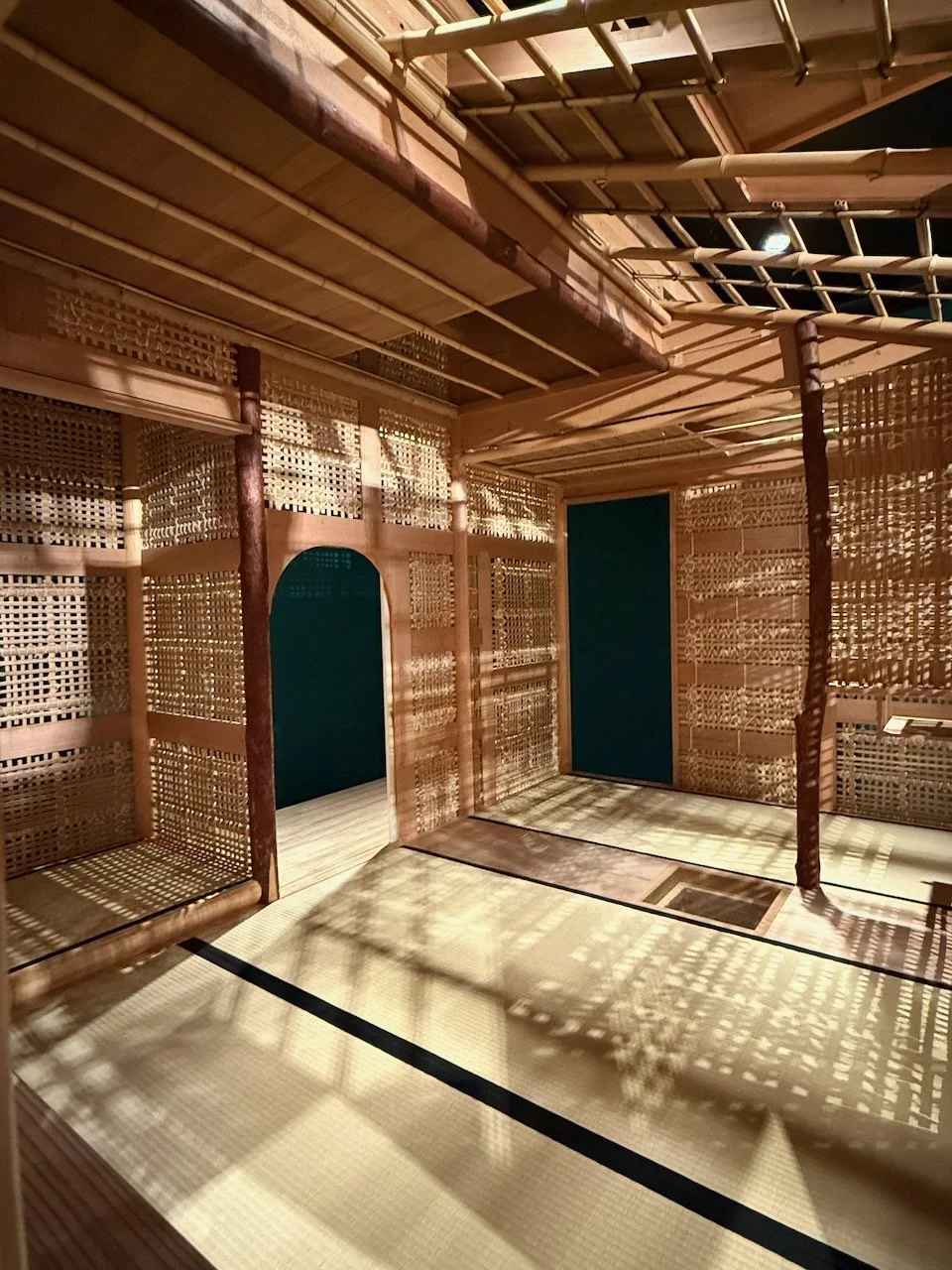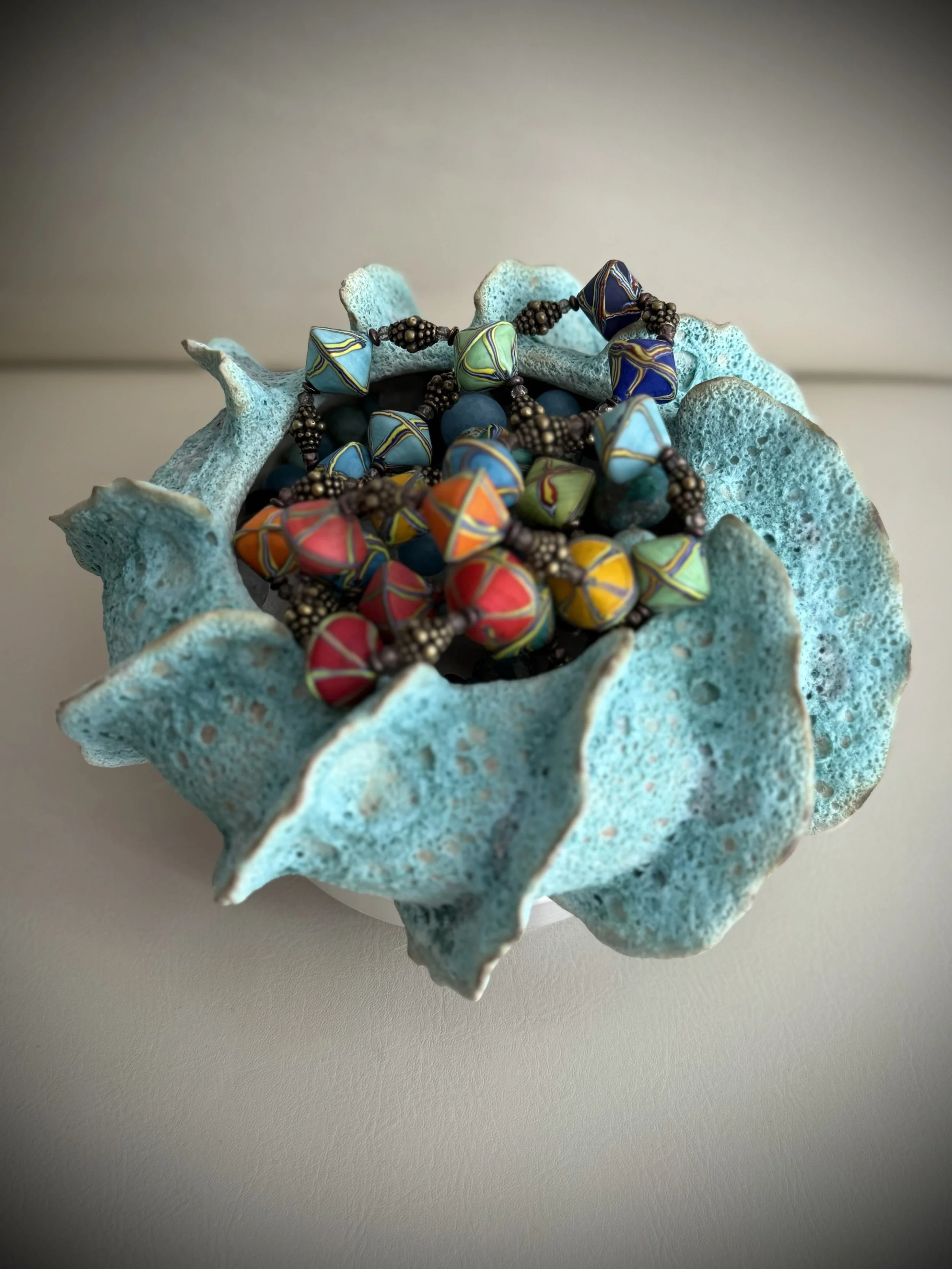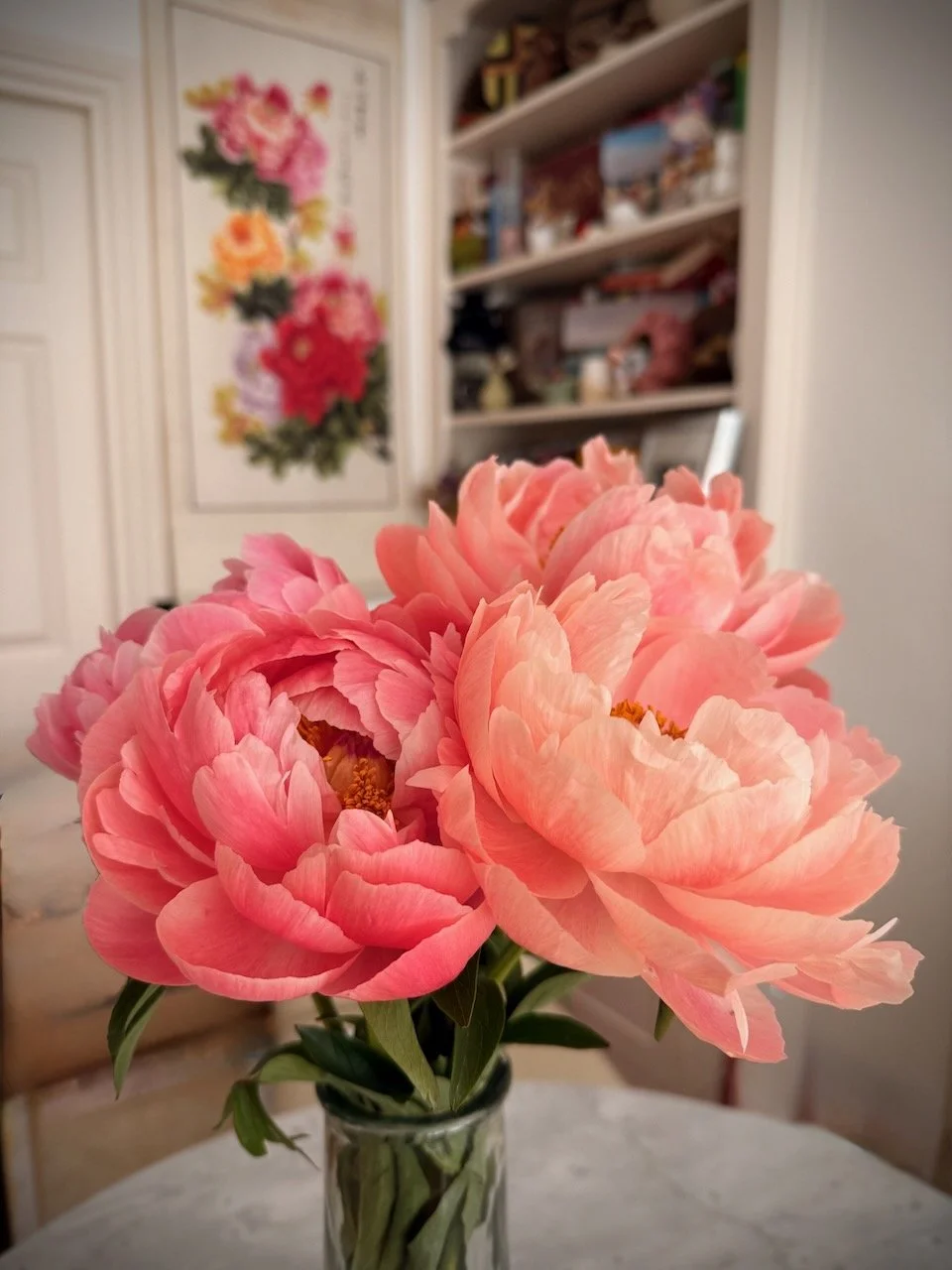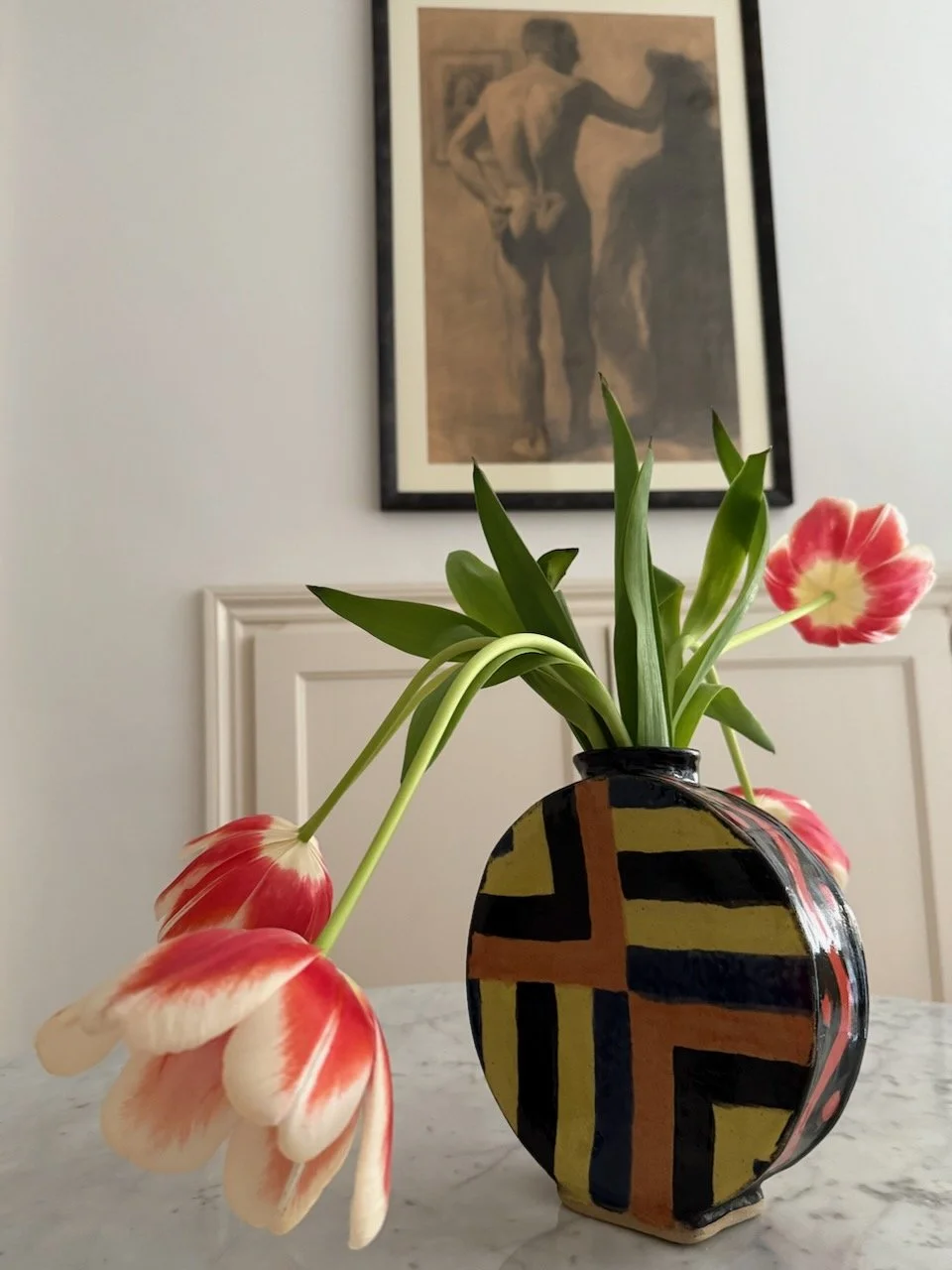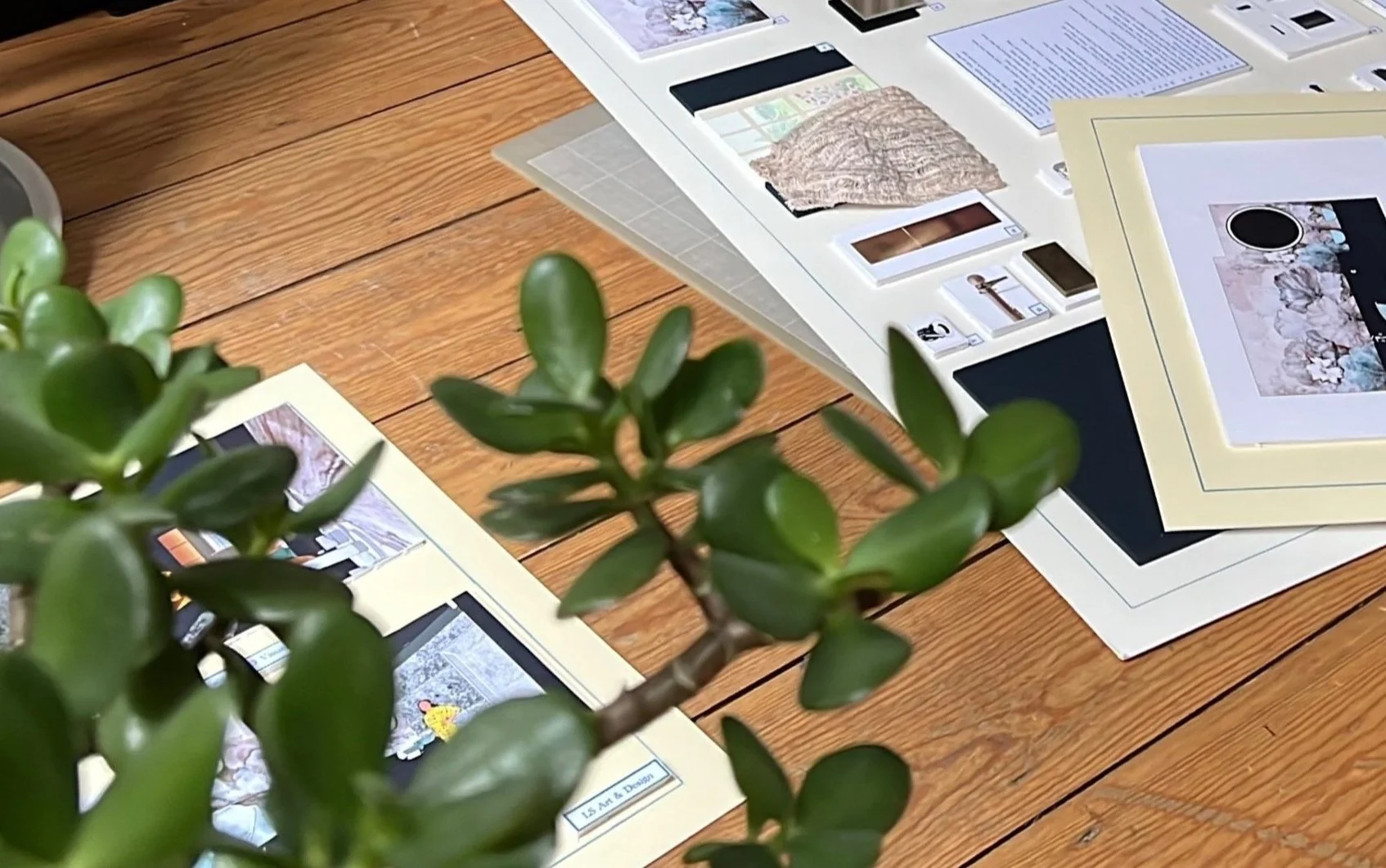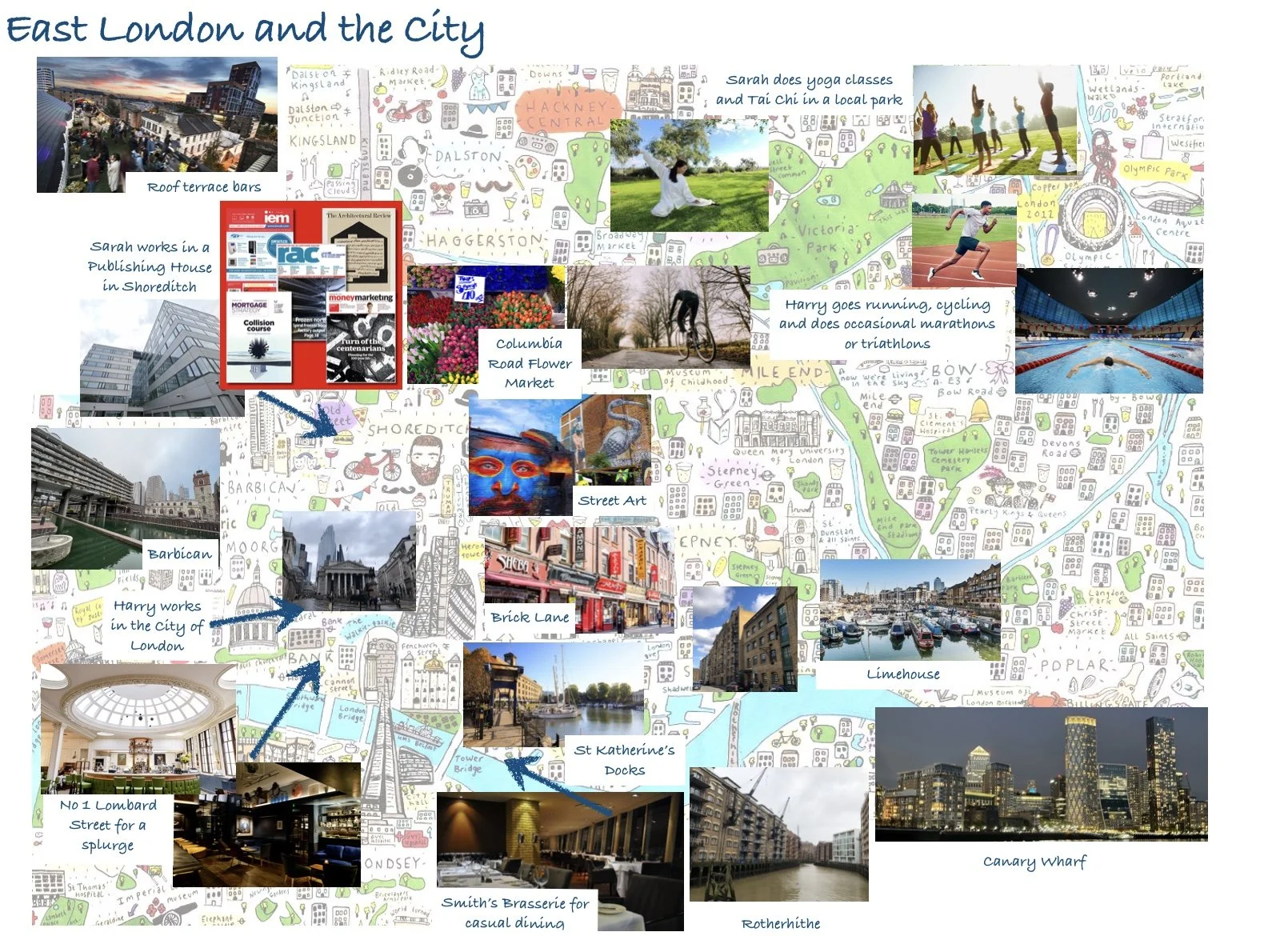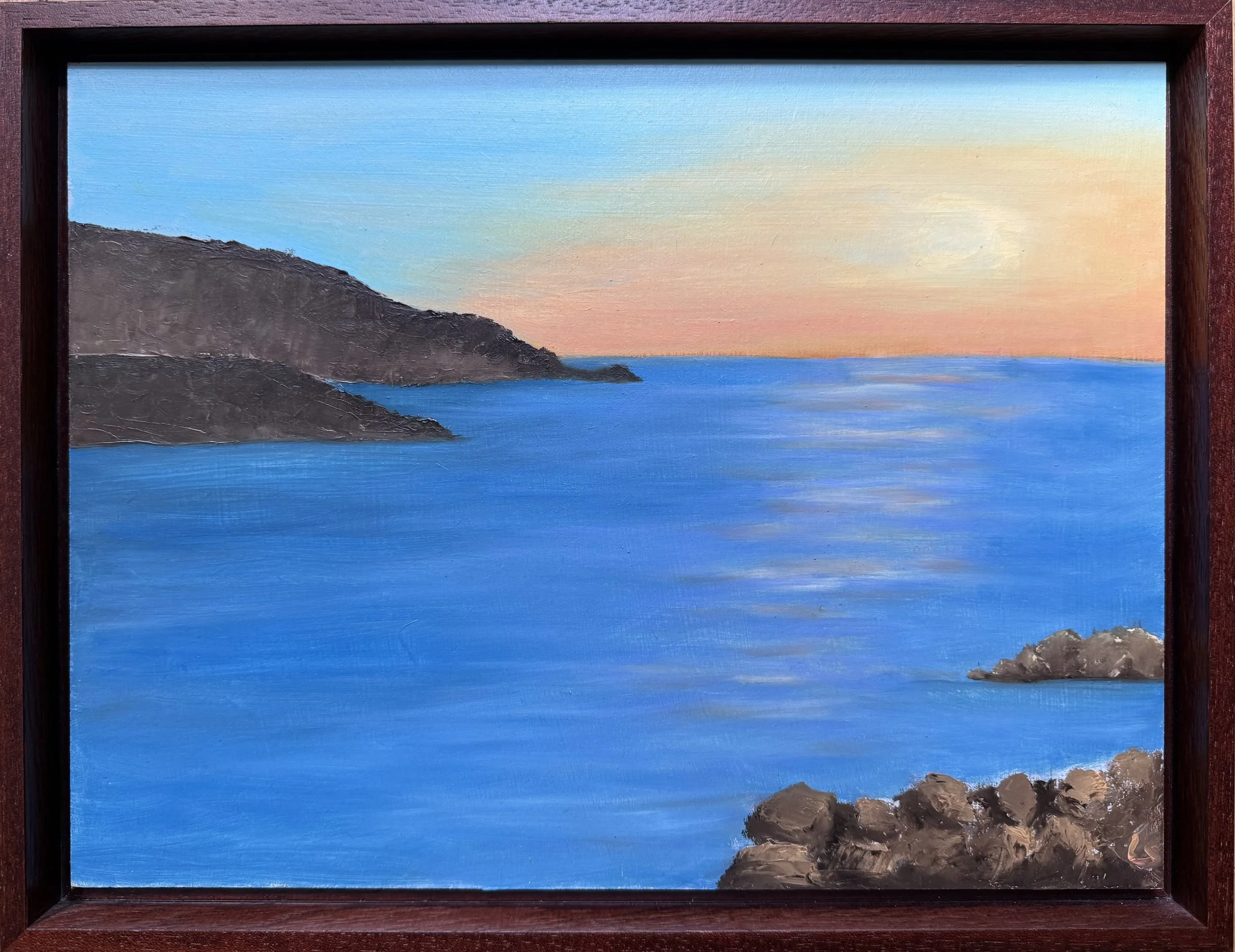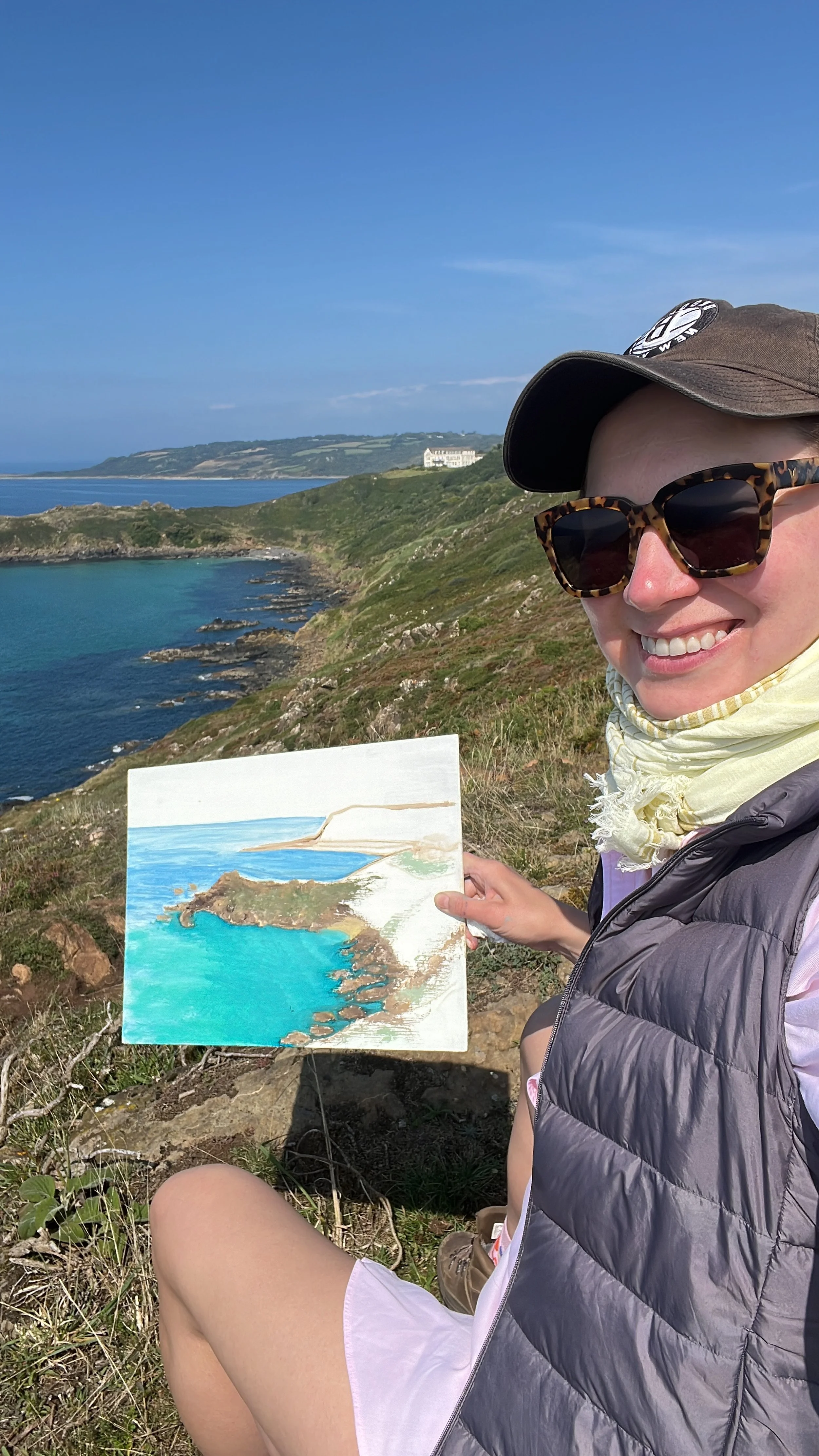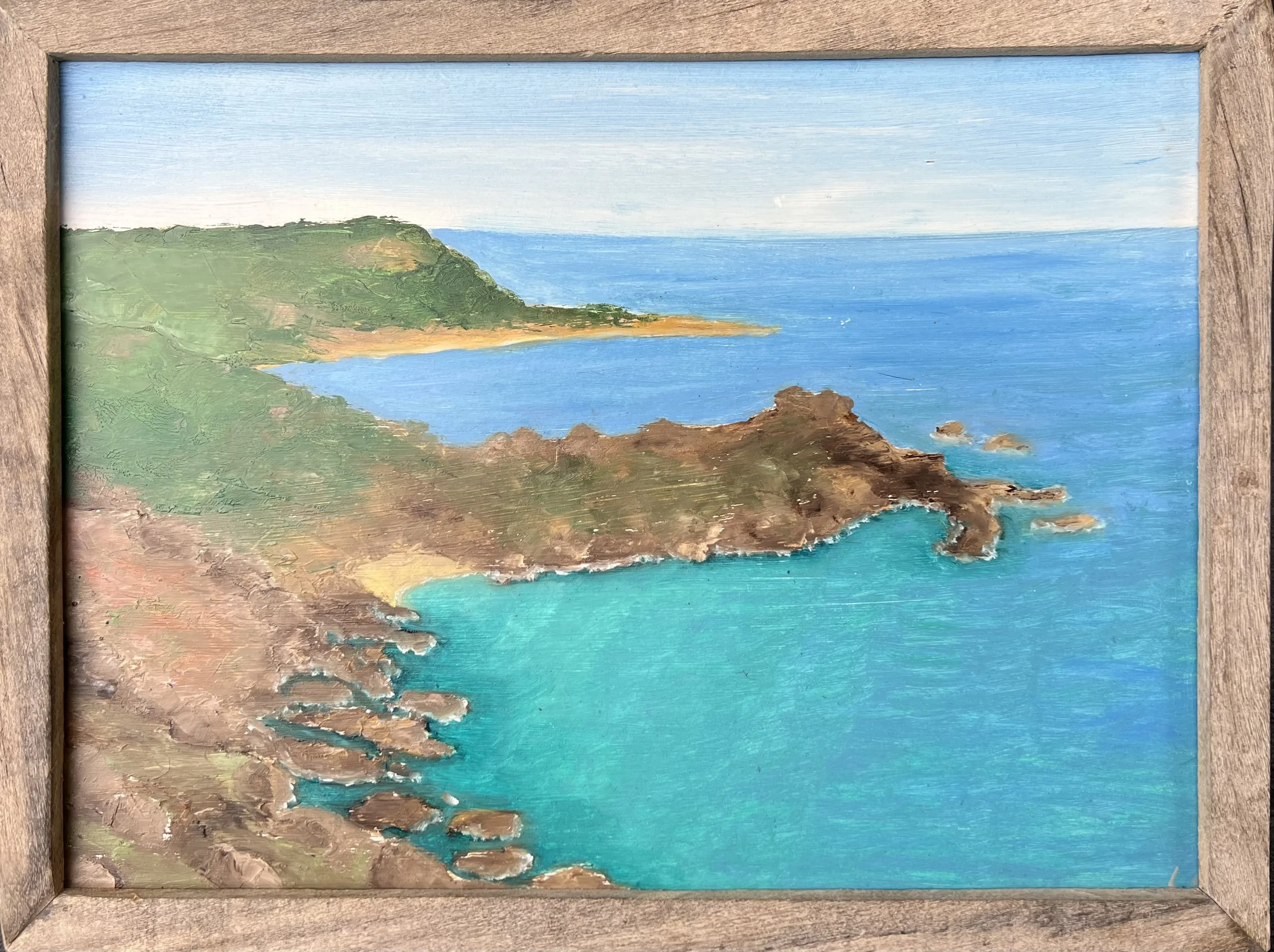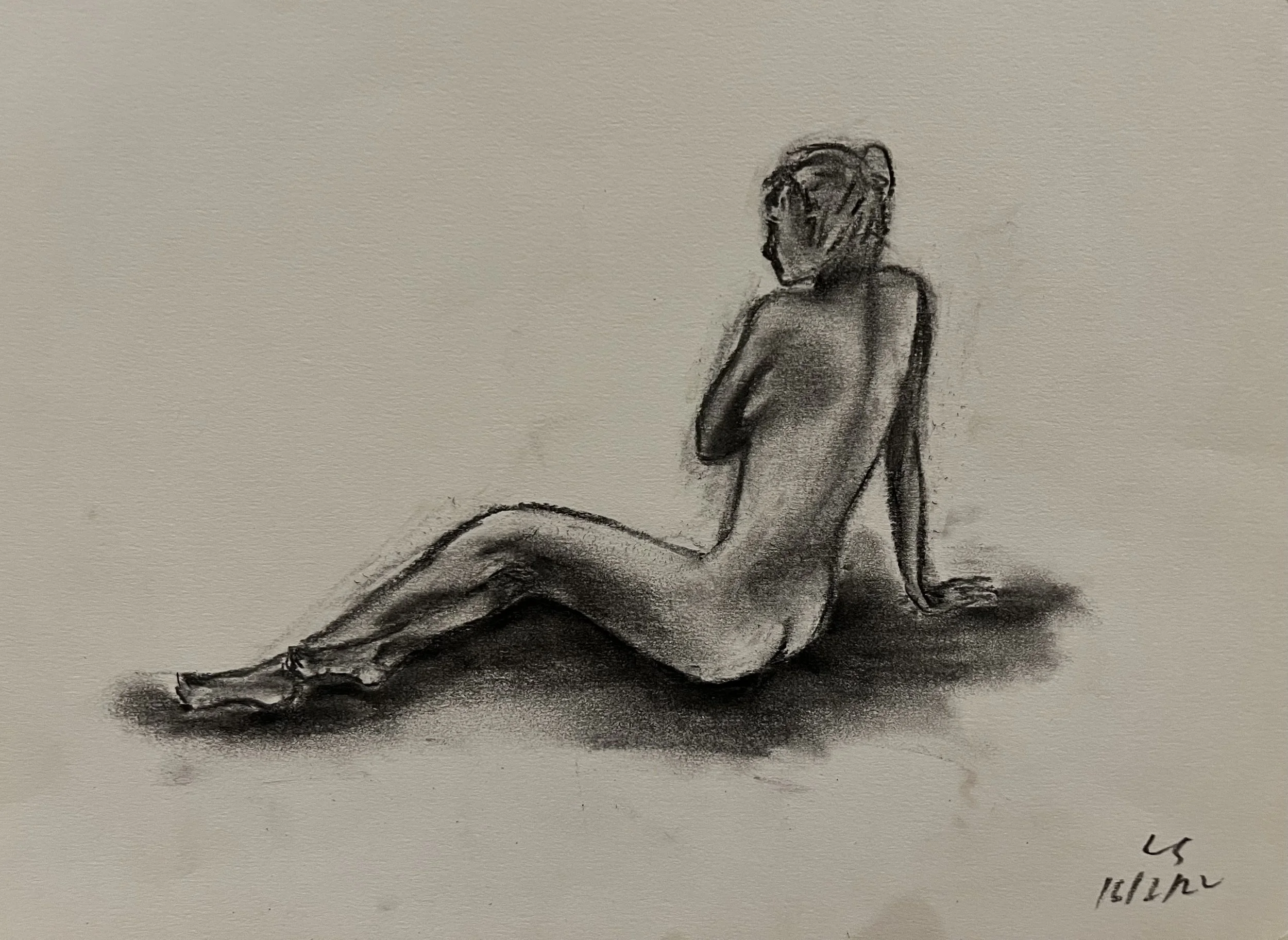Finding Harmony Through Colour - 5 Tips to Create Your Dream Space
As an artist and interior stylist, I love how colour transforms the way how we feel and experience a space. It’s not just about aesthetics — it’s about emotion, atmosphere and finding the harmony.
We’ve all heard about warm versus cool tones, but what does that really mean for your interiors?
It’s a common misconception that all yellows and reds are warm while all blues are cold. The truth is subtler. For instance, cobalt blue has a slightly warmer hue, while ultramarine is much colder. Similarly, golden yellow feels rich and warm, whereas lemon or lime yellow leans cool. Red and orange sit firmly on the warm side, while magenta and purple carry cool undertones.
Warm tones tend to evoke energy, comfort, and a welcoming atmosphere. Cool hues, on the other hand, bring calm, serenity, and a sense of spaciousness. Choosing the right balance is ultimately a matter of personal taste — but there are a few guiding principles that can help your interiors truly shine.
Tip 1 — Consider the Room’s Orientation
North-facing rooms usually receive cooler, crisp light, which can make cold tones appear even chillier. To balance this, use warmer colours — even if you’re after a tranquil mood.
South-facing rooms get bright light all day, which enhances any tone beautifully, while west-facing rooms glow with warm afternoon light, making even cooler hues appear more inviting.
You can also play with lighting temperature: bulbs rated 2000–3000K emit warm, golden light, while 4000K and above feel cooler, with 5000–6500K mimicking daylight.
Tip 2 — Mix Colours Confidently
Don’t be afraid to mix several colours within one space. While your scheme might be anchored by one or two main tones, introducing accents from the opposite side of the colour wheel adds depth and visual interest. These contrasts can make a space feel more dynamic and layered.
Tip 3 — Mind the Textures and Finishes
The same colour can look very different on matte versus glossy surfaces. Avoid using too many finishes of the same type — for example, if your walls are matte and your floors are aged wood, consider using satin or semi-gloss paint for the woodwork to introduce subtle highlights.
Remember that finish also affects maintenance: matte surfaces are beautiful but less forgiving, while glossier ones are easier to clean.
The same applies to furnishings and décor — balance materials like wood, metal, glass, ceramics, and plants to create harmony. Far Eastern philosophies like Feng Shui may approach design differently, but they share the same goal: a balanced and harmonious space.
Tip 4 — Colour and Wellbeing
Colour can powerfully influence mood and energy. Without diving too deeply into colour psychology, here are a few simple guidelines:
• Red is stimulating and energising — perfect for living, dining, or workout areas, but best avoided in bedrooms.
• Blue is calming and restorative, ideal for bedrooms — though in north-facing rooms, a slightly warmer tone might feel cosier.
Tip 5 — The Many Shades of Grey
Grey is often misunderstood. True “architectural grey” is just black and white mixed in different proportions — but greys created by mixing blue, red or magenta, yellow, and white have complex undertones.
When using grey as a dominant colour, pay attention to its undertone and match it with secondary colours that share the same warmth or coolness.
If you’d like help finding the perfect palette or creating a unique atmosphere for your home, I’d love to collaborate. Each colour story begins with understanding how you want your space to feel. Please check our styling packages and book a free discovery call.
The Art of Imperfection: How Wabi-Sabi Shapes Beauty and Living
Perfection is predictable — but imperfection is alive. Wabi-sabi teaches us that beauty lives in cracks, in things that weather, age, and change. It’s not about flawless — it’s about soulful. 🌿
✨ Ready to bring this philosophy into your home? Discover wabi-sabi ceramics in my shop.
Origins of Wabi-Sabi
A full size replica of the Japanese Tea House displayed during The Craft of Carpentry exhibition at Japan House in London — a reminder of wabi-sabi’s roots in humility, simplicity, and the beauty of everyday rituals.
The underlying concepts of wabi-sabi have roots in Chinese Taoism and Zen Buddhism, which emphasised accepting nature’s uncontrollability and finding beauty in humble, unrefined realities.
• Wabi (侘び): Originally meaning isolation or loneliness, it evolved to represent rustic simplicity, modesty, and contentment with what is imperfect or insufficient.
• Sabi (寂): Originally meaning withered or degraded, it transformed to signify the beauty that emerges with age, wear, and the passage of time, such as a weathered patina.
Tea master Sen no Rikyū 🍵 shaped this philosophy — shifting the tea ceremony away from lavish Chinese imports toward humble pottery, rustic teahouses, and quiet beauty. A reminder that true elegance lies in simplicity.
In a wabi-sabi tea ceremony, the nijiriguchi (low, crawl-through door) symbolises humility and equality — forcing every guest, regardless of rank, to bow and shed ego before entering.
🌿 This same spirit of humility and authenticity inspires my ceramics. Explore the collection.
Handcrafted vs Machine-Made
This is the very first of my sea creature vases — alive with organic curves inspired by ocean waves — paired with a Murano glass bead. Both pieces celebrate generations of human touch and artistry, where imperfection becomes soul.
The beauty of handcrafted objects lies in their uniqueness, artistic expression, and cultural connection. They embody a personal touch and sustainability. Machine-made items, by contrast, offer flawless precision, affordability, and convenience.
Machine-made is flawless. Handcrafted is alive — full of irregularities, textures, and soul. The handmade gift is unique and spiritual — it carries the artist’s energy.
💫 If you value soulful over flawless, you’ll love my handmade vases.
Connection
We connect with imperfection 💞. Traces of the hand, small irregularities — they make objects feel more human, more real. Imperfection reflects the reality of human experience, reminding us that we all struggle, grow, and change.
Embracing imperfections fosters authenticity and enables deeper connections — with objects, with people, with ourselves.
🌸 Every handcrafted piece I create is designed to spark that connection. Discover your imperfectly perfect match.
Transience of Beauty
Coral peonies 🌺, my favourite flowers, shift from bright coral pink to pale tea rose as they bloom. Their fleeting beauty is mirrored in a vintage hand-painted scroll I discovered in a Hong Kong flea market. After careful restoration, it now graces my home — living proof that beauty not only endures through time but deepens, becoming more meaningful after repair.
Nothing lasts forever 🍂. Weathered wood, faded fabric, cracks — all tell a story.
The transient beauty of wabi-sabi reminds us to appreciate the fleeting moments. By recognising that beauty is temporary, we learn to cherish the present more deeply.
This idea may be rooted in Japanese philosophy, but its truth is universal.
🍃 Would you like to bring more mindfulness into your daily rituals? Explore ceramics for everyday rituals.
Sustainability
The wabi-sabi philosophy encourages mindful consumption, cherishing what we already have, and repairing rather than replacing. It stands against fast fashion and disposable culture, valuing authenticity, durability, and materials that age gracefully.
Signs of wear and tear aren’t flaws — they’re part of an object’s story. Repair adds meaning. Choosing organic materials like ceramics, wood, stone, and metal supports sustainability while inviting beauty that evolves over time.
♻️ My ceramics are handcrafted with this ethos in mind — made to last, to age gracefully, and to be loved for years. Shop sustainable pieces.
At LS Art & Design, every piece embraces the wabi-sabi spirit — celebrating imperfection, impermanence, and soulful beauty.
✨ Discover ceramics that bring balance and authenticity to your home. Visit the shop.
📩 Or, join my newsletter for styling tips and inspiration on living with art.
5 Ways to Style Your Ceramics at Home: from Practical Tips to Personal Stories
Your ceramics don’t exist in isolation — connect them with the objects around them to create a narrative. Pair them with books, photographs, postcards, or artworks to reflect your personal journey. Pick out complementary colours so the piece feels harmonious within the space. This not only adds depth and character to your interiors but also helps guests understand your style and story.
Finding the Perfect Spot
Choose a prominent spot for your ceramics — a dining table, mantelpiece, bookshelf, or favourite cabinet. Be mindful of practicality too: ceramics are fragile, especially if you have children or pets around. To keep your pieces safe, try using museum gel — a clear adhesive used by galleries to secure artworks. I used it for my own exhibition, and it truly saved my vases!
If you’d like to start your own journey with handmade ceramics, explore my collection for pieces that bring both beauty and meaning into your home.
Think Beyond the Flower Vase
Ceramics are far more versatile than we often imagine. Vases aren’t just for flowers (though dried flowers look beautiful, especially in the colder months — see my Instagram post for styling tips). A shorter vase can double as a holder for stationery, make-up brushes, or pencils. Bowl-like vessels are perfect for fruit and snacks but also for storing jewellery, chunky necklaces, or small keepsakes from your travels — seashells, stones, souvenirs. Each idea creates a unique and meaningful display.
Curious to see versatile ceramics in action? Browse my handmade pieces designed for both function and style. Each piece tells a story waiting to be shared.
Geometrical Vase inspired by Tribal African prints is juxtaposed against the classical academic drawing
3. Let Your Ceramics Tell a Story
Your ceramics don’t exist in isolation — connect them with the objects around them to create a narrative. Pair them with books, photographs, postcards, or artworks to reflect your personal journey. Pick out complementary colours so the piece feels harmonious within the space. This not only adds depth and character to your interiors but also helps guests understand your style and story.
4. Play with Texture and Contrast
Ceramics are rich in surface detail, so let their textures shine. Contrast matte, rough bowls against glossy glass or marble tables, or place a shiny, brightly coloured vase on rustic wood or aged wallpaper. The play of opposites will make your ceramics stand out and feel intentional.
Need guidance styling ceramics in your home? Book a free discovery call! I’d love to help create a space that feels uniquely yours!
5. Embrace Imperfection
Don’t feel pressured to create a perfectly symmetrical display. A single bespoke ceramic piece can become the start of your art journey. Style it with flowers, photographs, or treasured keepsakes to make it truly yours. Sometimes it’s the imperfect arrangements that feel the most authentic and soulful.
Ready to bring the beauty of handmade ceramics into your life? Explore the Art Shop or commission a bespoke piece made just for you. Please drop me a line using a contact form.
Bespoke Interior Styling: Embrace the Design Mindset for a Meaningful Home
Many of us long to create a home that feels not only beautiful but also deeply personal. While trends may come and go, it’s the thoughtful touches and meaningful choices that bring soul to a space. This is where the design mindset becomes essential—not just for designers, but for anyone seeking to live more intentionally.
Many of us long to create a home that feels not only beautiful but also deeply personal. While trends may come and go, it’s the thoughtful touches and meaningful choices that bring soul to a space. This is where the design mindset becomes essential—not just for designers, but for anyone seeking to live more intentionally.
A design mindset is about approaching your space with empathy, curiosity, and creativity. It starts with listening—to how you want to feel in your home, to the rhythm of your daily life, and to the quiet details that make you you. It’s less about perfection, and more about creating a space that reflects your story.
This is the mind map of my graduation project at KLC School of Design (now part of West Dean). Initially, I struggled with this approach, it took me many attempts to find the best way for me to visualise the brief and unleash my creativity.
Through my bespoke interior styling service, I help clients bring their vision to life with natural materials, timeless aesthetics, and carefully chosen art and objects. This often includes incorporating handmade ceramics, original paintings, or commissioning custom pieces that elevate the atmosphere and make your space truly one-of-a-kind.
Whether you’re refreshing a single room or reimagining your entire home, embracing a design mindset allows you to connect more deeply to your space—and yourself.
Ready to reimagine your home with intention? Let’s work together to create a space that reflects your unique story. Get in touch to start your bespoke interior styling journey today.
Listening to Nature’s Voice: A Journey Through Form and Texture
I love the sea and its vibrant blue colour on a sunny day. My handmade stoneware pieces often feature shades of green and blue, reminiscent of the colours I admire during my hikes in Cornwall. This remote place in the UK is one of the most inspirational and relaxing spots for me, where I can walk across wild cliffs, completely losing the sense of time and the hustle and bustle of city life. I often paint during my hikes, inspired by striking views and the power of nature.
Have you ever wondered why there were no landscape depictions in ancient Greece? Nature was all around them, making it seem unnecessary. How things have changed since then! Like many others, I seek inspiration in the natural beauty that surrounds us.
From one of my hikes in Sennon, West Cornwall
I love the sea and its vibrant blue colour on a sunny day. My handmade stoneware pieces often feature shades of green and blue, reminiscent of the colours I admire during my hikes in Cornwall. This remote place in the UK is one of the most inspirational and relaxing spots for me, where I can walk across wild cliffs, completely losing the sense of time and the hustle and bustle of city life. I often paint during my hikes, inspired by striking views and the power of nature.
It's not just the colours that I find appealing but also the incredible textures and surfaces: from hard, weathered stones to bubbly sea foam, from strikingly bright wildflowers to the muted solemnity of ancient rocks.
The shapes I create are also inspired by natural curvaceous lines and organic patterns. I enjoy the imperfections of handmade pottery pieces and invite you to join my world! Let your space speak with art that feels like home. Explore my collection of ceramics shaped by nature’s quiet poetry—or commission a piece that tells your story.
Sunset watching at Gurnards Head, West Cornwall
The Intriguing Allure of Art: Understanding Our Deep Connection
We often admire art without realising the profound impact it has on us. Even in the digital age, art helps us remember and cherish special moments. In this blog, I summarise the main motivations behind our attraction to certain artworks. Why does one painting make someone stop and hold their breath while another person simply passes by?
LuSee. Sunset at Porthmeor Beach. Oil on canvas.
We often admire art without realising the profound impact it has on us. Even in the digital age, art helps us remember and cherish special moments. In this blog, I summarise the main motivations behind our attraction to certain artworks. Why does one painting make someone stop and hold their breath while another person simply passes by?
Sometimes, we don’t fully understand what an artwork is about or what is depicted. A visit to a museum or gallery prompts us to research more about the culture and ideas from past times or unfamiliar environments, enriching our experience and education.
Art can also be an escape from reality or a visualisation of our dreams. When the "Sunset at Porthmeor Beach" painting was displayed at the Euphoria of Colours exhibition at Espacio Gallery, many guests commented that it transported them to Cornwall and created positive summer holiday vibes.
Art helps us find a better balance in life. If you live in the middle of a bustling city, you might fill your flat with plants, wooden furniture, organically shaped handmade ceramics, or landscape paintings depicting nature, subconsciously trying to bring the outside greenery in. My interior design style is inspired by nature and an earthy colour palette. Check the artistic styling page to find out more.
The creative process is not only about channeling positive energy or escaping reality; it can also be a medium to express our anxieties and troubles. Such expression helps us release tension and stress, making us feel better. Observing deeply moving artwork also helps us relate to others, understand ourselves better, and improve our communication skills. If you would like to arrange a one-to-one drawing or painting session, please get in touch.
Ready to explore the profound impact of art on your life? Dive into our bespoke art services and discover how personalised pieces can transform your space and mindset. Visit our Art Shop to find unique handmade ceramics or commission a custom artwork that resonates with your journey. Contact us today or book a free discovery call to start your artistic adventure! Let's create something beautiful together!
This blog post is based on a philosophic essay by Alain de Botton.
Art that Heals: Finding Beauty and Balance at Home
Surrounding yourself with beautifully designed pieces is not just aesthetically pleasing; it also provokes positive emotions and ‘feel-good’ vibes. A thoroughly selected colour scheme, decorative elements like handmade ceramics, and original paintings can help create the desired atmosphere in each space of your home, whether it’s a living room, bedroom, or study.
Painting en plein air in Cornwall. It took me good 4-5 hours and a couple of sunburnt patches to complete it.
When one says ‘Art Therapy,’ the first thing that springs to mind is immersing yourself in creative hobbies like drawing, painting, ceramics, or photography. Many of us have taken up these activities to cope with intense stress, whether it was a pandemic, the loss of a loved one, or a total meltdown in life. However, it’s not just arts and crafts that can help you better endure stress.
Surrounding yourself with beautifully designed pieces is not just aesthetically pleasing; it also provokes positive emotions and ‘feel-good’ vibes. A thoroughly selected colour scheme, decorative elements like handmade ceramics, and original paintings can help create the desired atmosphere in each space of your home, whether it’s a living room, bedroom, or study.
If you’re unsure how to create the right atmosphere at home, we can help you to create a bespoke art piece (painting or artisanal ceramics) and put together a unique interior style that matches your desired vibe. Check the artistic styling page to find out more about what we offer!
I am very pleased with this painting, which now proudly hangs in my living room. It constantly reminds me of that beautiful sunny Cornish day, channelling happy vibes and helping to feel better during miserably cold winter days.
Art is not purely about aesthetics. It helps us understand ourselves more deeply, tune into the emotions of others, develop a deeper sense of empathy, and find hope and growth during difficult periods in our lives. We subconsciously relate to certain art pieces depending on the moments we are experiencing in our lives. Art often helps us understand and ultimately deal better with the situations we find ourselves in.
In this blog, I’ve included snaps from one of my painting sessions to better illustrate the main message. The painting was done ‘en plein air’ (in the open air in French, a very fast way of painting favored by impressionists). Within a few hours, I managed to capture the joyful mood of a sunny summer day in Cornwall and its stunning coastline. This moment is now forever captured in my memory and in this painting, which is proudly displayed in my flat. Every time I look at it, a smile appears on my face, reminding me of happy memories. I can literally hear the seagulls flying by and breathe in the fresh sea breeze. Art indeed works magic!
Ready to transform your space and experience the healing power of art? Visit our Art Shop to explore unique handmade ceramics, or contact me today to commission a bespoke piece that resonates with your personal journey. Book a free discovery call now and let’s create something beautiful together!
The Healing Power of Art: Why It Feeds the Soul
Being engaged in art, such as visiting galleries, watching plays, or surrounding yourself with original paintings and handmade ceramics, can help cultivate your sense of curiosity. It encourages you to think differently about life, be more open to new sensations and experiences, and stay connected to your emotions. Art can improve your general well-being and help you deal with mental or physical trauma.
Whether you are looking to purchase a handmade ceramic object, order a bespoke painting commission or display art in your home in a more beautiful and creative way, I will be happy to help you to create unique interior style for your home.
Being engaged in art, such as visiting galleries, watching plays, or surrounding yourself with original paintings and handmade ceramics, can help cultivate your sense of curiosity. It encourages you to think differently about life, be more open to new sensations and experiences, and stay connected to your emotions. Art can improve your general well-being and help you deal with mental or physical trauma.
Appreciating or creating art involves many parts of our brains that process senses, emotions, memory, and cognition. We are drawn to experiencing art because it creates a warm, pleasant feeling, encouraging us to pursue more of the same. Aristotle described this as “catharsis,” where the emotions you experience are so overpowering that you feel more connected to yourself and those around you. Have you ever seen a brilliant movie or an incredible painting and wished the moment would last forever?
Live drawing has a very strong energy, capturing physical and emotional state of a model in that particular moment then preserve it for years. There is this magical connection between artist’s eyes, mind and hands to enable depicting a human on what used to be a blank sheet of paper just a few moments ago.
Art has existed for centuries, playing an integral role in the lives of many generations. It has always had a profound impact on our well-being, helping us understand ourselves better and connect with others on a deeper level.
Are you ready to experience the healing power of art in your home? Whether you're looking for a bespoke painting, artisan pottery, or expert interior styling, I'm here to help you create a home that reflects your personality and brings joy to your everyday life.
Explore my art shop and get in touch today to start your journey towards a more beautiful and inspiring home.



